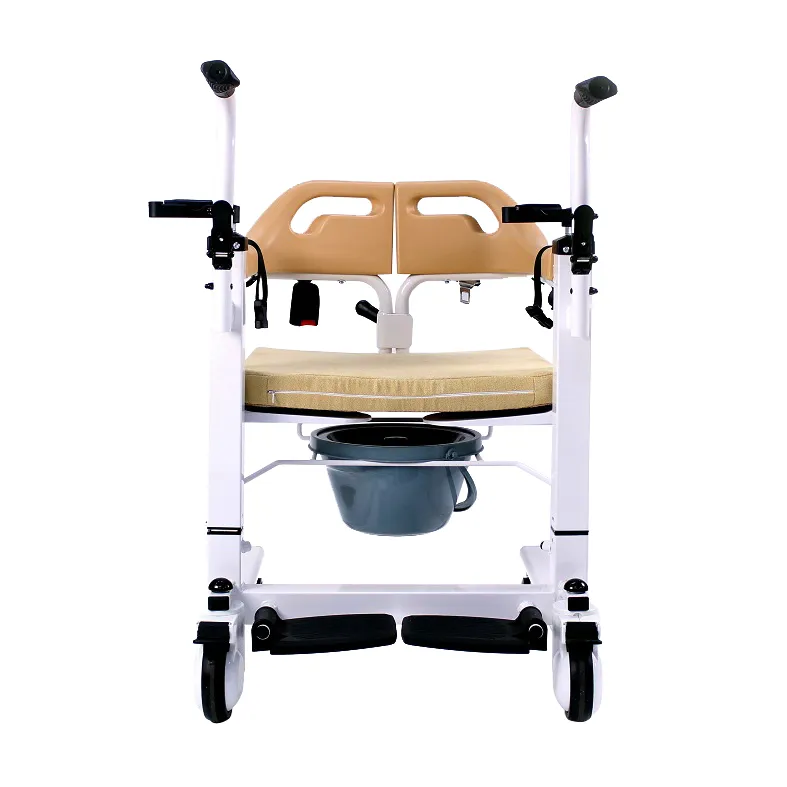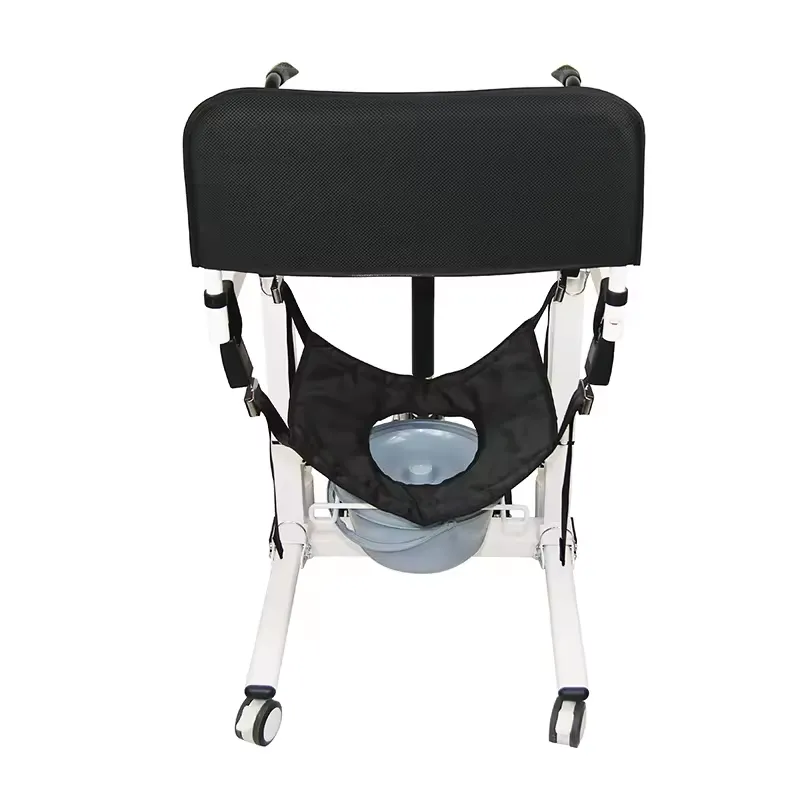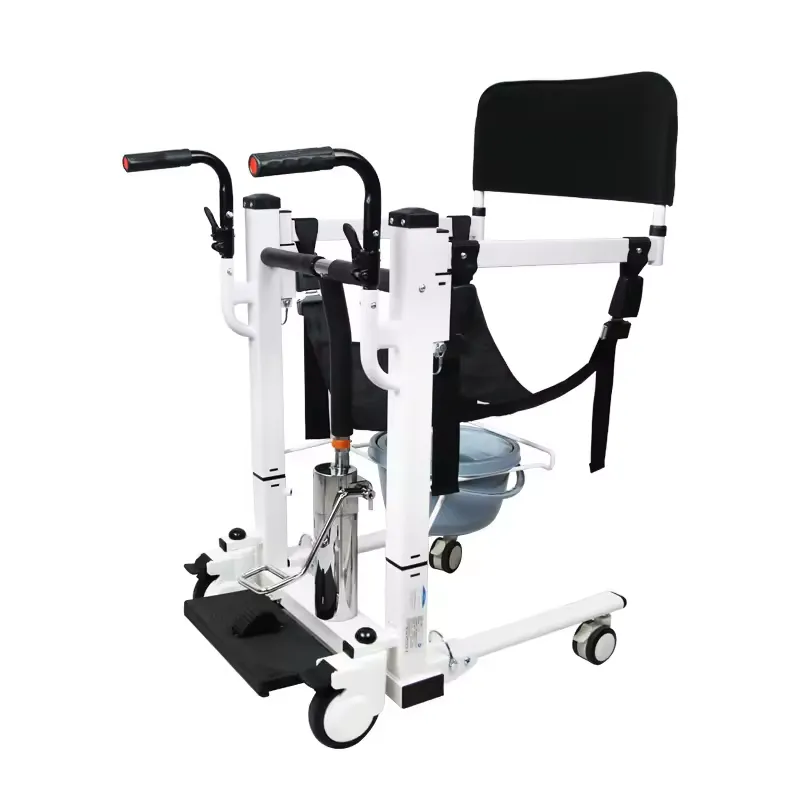With the global aging population expanding rapidly, the incidence of cognitive impairment diseases such as Alzheimer's disease (dementia) is rising rapidly, making dementia one of the most common neurodegenerative diseases among the elderly.
According to data released by the National Health Commission of China, there are currently over 15 million dementia patients in China. For this special group, "transfer" is a crucial and high-risk aspect of daily care.
How to transfer an elderly person with dementia from bed to a wheelchair? How to safely move them from their room to the bathroom? How should caregivers respond when the patient exhibits resistance, loss of control, or disorientation? These questions are troubling countless families and nursing homes.
Traditional methods for transferring elderly people with dementia often suffer from low efficiency and significant safety risks. The "elderly lift transfer chair," as a new type of professional care tool, is gradually becoming a key means of scientific care.
This article will systematically review care concepts, behavioral coping strategies, and the use of assistive devices to address the question of "how to transfer people with dementia," providing a scientific, practical, and professional transfer methodology.

What are the behavioral characteristics of dementia patients?
1. Common Cognitive Impairments and Behavioral Risks
Elderly people with dementia often exhibit the following behavioral characteristics due to brain function decline:
· Spatial disorientation: Unable to distinguish directions, unaware of the location of the toilet or bedroom.
· Resistance to care: Feeling fear or anger when touched or forcibly moved.
· Difficulty understanding caregiver instructions or cooperating with actions.
· Decreased body control: Decreased balance and muscle strength, prone to falls.
These characteristics make transfer operations extremely complex. Any improper pulling, lifting, or forceful movements can trigger falls, fractures, or even violent resistance, threatening the safety of both the patient and caregiver.

What are the care principles for transferring elderly people with dementia?
Before implementing an actual transfer, a scientific, patient, and empathetic care philosophy must be established. Key principles include:
1. Prioritizing Communication
Even if the patient has limited verbal comprehension, inform them beforehand in a slow, gentle tone: "We need to go to the restroom. Let me help you sit down." Nonverbal cues such as eye contact, gestures, and light touch can also aid understanding.
2. Maintaining Dignity
Avoid exposing the body in public or using rough handling. Although dementia patients have cognitive impairment, they remain emotionally sensitive and may experience shame and resistance from being "manipulated."
3. Reducing the Frequency and Intensity of Transfers
Arrange daily routines and living areas reasonably to minimize high-intensity, frequent transfers within a day. For example, provide portable washing facilities in the room.
Elderly Lift Transfer Chair: A Key Tool for Solving the Transfer Challenges for Dementia Patients
Among many transfer tools, the "elderly lift transfer chair" is designed specifically to address the core needs of elderly people with dementia and limited mobility. It reduces physical contact, improves operational efficiency, while ensuring patient safety and dignity.
1. What is an Elderly Lift Transfer Chair?
The elderly lift transfer chair is a nursing device that integrates lifting, sliding, fixed support, and a toilet opening. It is suitable for safely transferring patients from beds and sofas to toilets, bathrooms, and medical facilities.
Core components include:
· Electric/manual lifting system
· Removable and washable non-slip seat cushion
· Rotatable armrests and backrest
· Four-wheel foot brake structure to prevent slipping during movement
· Toilet opening design for direct toilet access
2. Advantages of the elderly lift transfer chair
Advantages | Description |
Non-invasive transfer | Avoids picking up or forcibly lifting, reducing body friction |
| Precise lifting and adjustment | Can be aligned with the height of a bed, sofa, or toilet seat for "zero height difference" transfer |
| Flexible movement | Multi-directional casters allow for maneuvering in confined spaces |
| Safe and stable | Equipped with a safety belt and foot brake to effectively prevent patient slippage |
| Improved care efficiency | Complex transfers can be completed by one person, reducing labor costs |

Transfer process: Elderly lift transfer chair operation demonstration
Taking "transferring from bed to toilet" as an example, the following are the standard operating steps:
Step 1: Preparation
· Gently explain to the patient: "We need to use the toilet. I'll help you sit in the chair."
· Ensure the environment is clean and well-lit to avoid visual misdirection.
· Place the elderly lift transfer chair... Push the chair to the bedside and lock the casters.
Step Two: Assist Standing and Transfer
· Adjust the chair height to be level with the bed.
· Assist the patient to sit up gently, feet on the ground.
· Raise the armrests to allow the patient to face sideways towards the chair.
· Support under the armpits to guide them to sit down.
Step Three: Lower and Secure the Chair
· Adjust the chair to toilet height (low position).
· Ensure the toilet bowl opening is aligned with the toilet bowl.
· Fasten the seatbelt and wheel locks.
Step Four: Transfer and Follow-up Care
· Repeat the above steps after toilet use.
· Clean the seat cushion and disinfect the surface.
· If used at night, it is recommended to install armrest nightlights and sensor prompts.
Transfer Techniques and Coordination Points in Different Scenarios
Scenes | Operational Recommendations |
From bed to wheelchair | Select an electrically adjustable elderly transfer chair, align it with the edge of the bed to minimize height difference |
| From wheelchair to toilet | Adjust the seat height to match the toilet seat height, ensuring the drain hole is aligned to prevent slipping during undressing |
| From indoors to hallway | Remove any obstacles from the floor beforehand, and use casters to ensure a smooth transition |
| When resistance is strong | Stop the transfer process, calm the person, and use nonverbal communication such as handshakes, eye contact, and gentle back pats |

What are the key points for choosing an elderly lift transfer chair?
Dementia patients have extremely high requirements for safety and comfort. When choosing an elderly lift transfer chair, the following should be considered:
· Does it have a multi-point locking braking system: key to anti-slip?
· Does it support a removable and washable seat and toilet opening?
· Does the height adjustment range cover the patient's height?
· Does the maximum weight capacity meet the patient's weight?
· Is it suitable for narrow doorways and passageways?
· Does it have an anti-tipping device and backrest adjustment function?
Successful Case Sharing in Medical and Home Care
Case 1: Rehabilitation Department of a Top-Tier Hospital in the City
A hospital's rehabilitation department is equipped with 12 elderly lift transfer chairs, providing bed-to-bed or bed-to-toilet transfers for more than 30 dementia patients daily, effectively reducing nursing manpower consumption by 50%, and achieving zero falls during transfers.
Case 2: Home Care for a 90-Year-Old Dementia Patient
A family in Guangzhou purchased an electric lift transfer chair for their 90-year-old dementia patient. One person completes the entire process of bathing, toileting, and medical visits daily. The elderly patient has become quieter due to reduced physical exertion during movement, and the caregiver's stress has significantly decreased.
What makes Dayang Medical products high quality?
Quality has always been the core of Dayang Medical. We follow the 100-1=0 principle, meaning even one small error is unacceptable. Our factory in Foshan uses advanced production technology and strict quality control at every step.
Products are tested for durability, safety, and comfort, and certified by ISO13485, ISO9001, FDA, and CE. Buyers who purchase from our company not only receive high quality products, but also enjoy factory-direct sales, low price purchasing, and special promotions.










